#Douglas Wellman
Text
youtube
Perigo no espaço (Fire in the sky, 1978), o precursor de Impacto Profundo!
#Fire in the sky#tv movie#Jerry Jameson#deep impact#Paul Gallico#Richard Crenna#Elizabeth Ashley#1978#70's movies#Lloyd Bochner#Joanna Miles#David Dukes#Andrew Duggan#Marj Dusay#Michael Biehn#Kip Niven#Merlin Olsen#Diana Douglas#Nicolas Coster#Bill Williams#Cindy Eilbacher#William Bogert#Maggie Wellman#Youtube
1 note
·
View note
Text

Wild Boys of The Road (1933) d. William A Wellman (poster from US)
Had I cleaned out my DVR after suffering through Douglas Fairbank Jr's endless love for his own overacting like I considered after seeing Love Is A Racket, I would have missed this astonishing brutal film about young unemployed teens in the depression. It starts out like Andy Hardy, but stick around, it becomes akin to I Was A Fugitive On A Chain Gang. It may have a happier ending than that classic, but this is still pretty amazing.
0 notes
Text

Frances Dee-Douglas Fairbanks Jr. "Love is a racket" 1932, de William A. Wellman.
9 notes
·
View notes
Photo










love is a racket (us, wellman 32)
15 notes
·
View notes
Photo





Love Is a Racket (Such Things Happen) (1932) William A. Wellman
April 18th 2020
#love is a racket#such things happen#1932#william a. wellman#douglas fairbanks jr.#ann dvorak#lee tracy#frances dee#lyle talbot#cecil cunningham#warren hymer#pre-code
8 notes
·
View notes
Photo

love is a racket (1932)
0 notes
Text
The Legacy of Richard Barthelmess by Susan King

Douglas Fairbanks, Rudolph Valentino and John Gilbert are usually mentioned as the top silent film stars of the 1920s. But there was also Richard Barthelmess, who came to fame opposite Lillian Gish in the D.W. Griffith classics BROKEN BLOSSOMS (‘19) and WAY DOWN EAST (‘20). In fact, Gish once said Barthelmess’ face was “the most beautiful of any man who had ever been before the camera.”
A fan once wrote to the editor of Picture Play magazine that “Dick is getting more and more popular every day and why? Because his wonderful black hair and soulful eyes are enough to make any young girl adore him.” At the height of his career, he received 6,000 fan letters.
And then there was my grandmother, aka, Nana. She always seemed nonplussed about Hollywood and actors. But she didn’t feel that way about Barthelmess. Though I remember some of our trip to Miami Beach when I was four, I don’t recall that we encountered him at the Miami Airport. Many years later, my mother related to me with much glee that Nana was beside herself when she saw the then 64-year-old actor checking in for a flight.
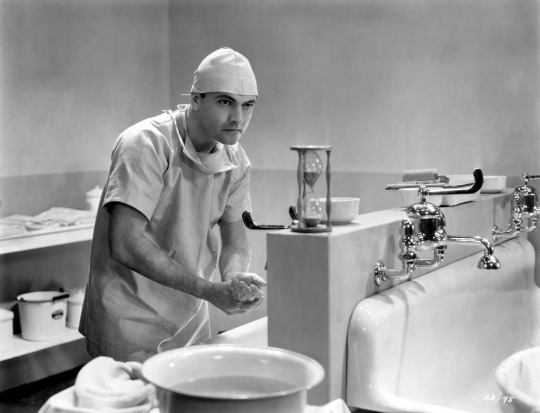
Besides the swoon factor, Barthelmess had the acting chops. He received strong reviews playing a kind Chinese man who falls in love with a Caucasian woman (Gish) in BROKEN BLOSSOMS and was equally strong in WAY DOWN EAST as the earnest young man who rescues the love of his life (Gish) from death on a fast-moving ice flow.
And he further cemented his popularity with critics and audiences in TOL’ABLE DAVID (‘21), Henry King’s drama about the youngest son of a tenant farmer who yearns to be treated as a man. The film went on to win Photoplay magazine’s Medal of Honor.
During the 1920s, Barthelmess generally was cast as the all-American hero. As his New York Times obituary stated, he was “masculine, but gentle, modest and unassuming” and possessed a “shy smile” and “sleek black hair.” Fairbanks, Valentino and Gilbert were seen as far more sexual than Barthelmess.
He formed his own production company, Inspiration Pictures, making 12 films under that banner before he sold it when he was offered a financially strong contract with first National Pictures. Barthelmess was one of the founders of the Academy of Motion Pictures Arts and Sciences, and he was a double nominee for lead actor at the first Academy Awards for THE PATENT LEATHER KID (‘27) and THE NOOSE (‘28). Silents were golden for Barthelmess; talkies less so. Audiences first heard Barthelmess in WEARY RIVER (‘29), one of those hybrid films Hollywood made at the beginning of the talkies era that featured both silent and sound sequences. And, there was a bit of a Lina Lamont/Kathy Selden trick going on behind the scenes for Barthelmess. Initially, it was thought that he actually was singing in the film.

The New York Times Mordaunt Hall even said in his review that “[Barthelmess] does sing it quite well.” It was later revealed that singer Johnny Murray provided the vocals and the actor was lip-synching.
I’ve seen a lot of Barthelmess’ talkies, and personally I found him uncomfortable on screen. His voice was rather weak, and his glacial beauty seemed to hurt his performances instead of enhancing his work, as it did in the 1920s. Still, the critics were giving him good reviews, and audiences seemed to like his pre-Code melodramas and his Depression-era persona.
Barthelmess worked with a lot of the top directors of the day, including Howard Hawks in THE DAWN PATROL (‘30); William A. Wellman in CENTRAL AIRPORT (‘33) and HEROES FOR SALE (‘33) and even the legendary German filmmaker G.W. Pabst (PANDORA’S BOX, ‘29) in his only Hollywood film, A MODERN HERO (1934).
But by this time, his star was fading. And around the time of his 40th birthday, Barthelmess decided to get plastic surgery. The procedure was botched and left him with visible scarring. It was three years before he felt ready to go back in front of the camera. And when he did, he gave the performance of his sound career in Hawks’ ONLY ANGELS HAVE WINGS (‘39), one of my favorite films starring Cary Grant, Thomas Mitchell and Jean Arthur about a group of daredevil pilots working for a small company in South America.
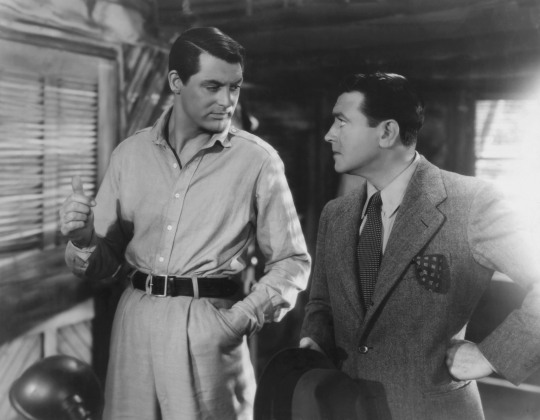
Barthelmess plays a pilot who comes to work at the company with a black mark on his name for having left his former crew to die. Grant gives him the hardest and most dangerous assignments. Hawks didn’t want his scars to be covered. According to IMDB, Hawks told Barthelmess “those scars tell the story and are important to your character.” Barthelmess is a revelation. There is a gravitas to his voice and, no longer strikingly handsome, he turns the supporting role into a character performance to remember.
His scars are also present in THE SPOILERS (‘42), a rip-roaring Western starring John Wayne, Randolph Scott and Marlene Dietrich. Though he was sixth billed, Barthelmess made the most of his role as the Bronco Kid who pines after Dietrich. He also has a great death scene. After making one more film, he retired from Hollywood and enlisted in the US. Navy Reserve during World War II. He lived off of his substantial real estate investment, which included a 50-acre beachfront estate in Southampton, which he sold in 1955 to Henry Ford II.
In 1957, Barthelmess was among the recipients of the second George Eastman Award given by the George Eastman House in Rochester, New York, for his distinguished contribution to the art of film. And three years later, he received a motion picture star on the Hollywood Walk of Fame. Barthelmess died of throat cancer at the age of 68 in 1963, but not before making Nana’s heart beat a little faster in 1959.
#Richard Barthelmess#silent film#silent movie#talkies#old hollywood#TCM#Turner Classic Movies#Susan King
79 notes
·
View notes
Text
Favorite film discoveries of 2019
Every year, my new-to-me favorites list always shocks me in some way. This year, the sheer amount of movies made in the 2010s on display is INSANE by my standards. Of course, most of the modern movies here are throwbacks or tributes to older styles of cinema, so maybe it’s not that shocking in the long run.
Another running trend this year: movies that are old but not as dated as we would wish. Many of the older films here deal with xenophobia and political strife in ways that still feel shockingly prescient today-- the more things change...
ONCE UPON A TIME... IN HOLLYWOOD (DIR. QUENTIN TARANTINO, 2019)
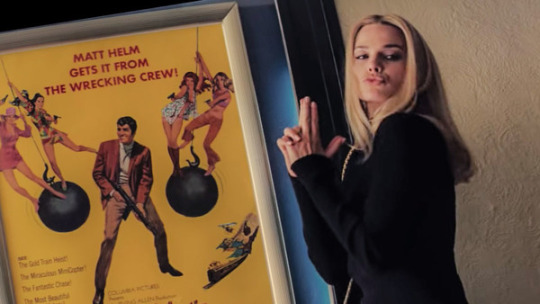
I never thought the day would come where my favorite movie of the year would actually be made after the 1970s, let alone by Quentin Tarantino. Then again, this movie is all about the end of Old Hollywood as well as a big love letter to the 1960s, so maybe it’s not that shocking a state of affairs. I adored this movie, the level of detail, the laidback yet elegaic vibe, the comedy and the relationships between all the characters. It was one of those movies where I loved even the scenes where nothing seems to be happening at all-- I mean, who knew Brad Pitt feeding his dog and watching TV could be entertaining?? But it is and I can't wait to see this one again!
INTENTIONS OF MURDER (DIR. SHOHEI IMAMURA, 1964)
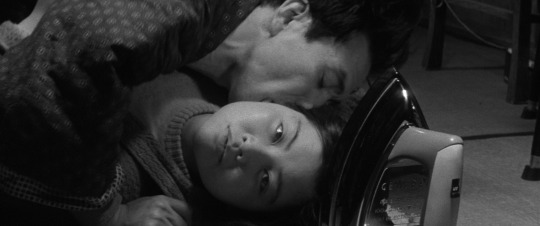
Intentions of Murder has an insane premise, one that runs the risk of being tasteless: a housewife in a miserable, exploitative marriage is raped by a sickly burglar during a home invasion. Even worse, she can’t shake him, as he’s suddenly infatuated and wants her to run away with him to the city. And weirder still: her current existence is so miserable that she’s TEMPTED. While abuse and rape are grim subjects for any story, Intentions is actually about a woman coming into her own and finally standing strong against all these men trying to use her. It’s a weird blend of drama and dark comedy, a truly savage satire on patriarchy and class-snobbery.
JOKER (DIR. TODD PHILLIPS, 2019)

I went into this movie expecting to think it was overhyped and when I first left the theater, I was all ready to say “it’s good but not THAT good.” But it ended up haunting me for weeks afterward, and I found myself thinking about how everything just tied up so well together, from the grotty urban hellscape which serves as the setting to Phoenix’s brilliant performance. It reminded me a lot of A Clockwork Orange in how intimate it lets you get to this violent man while never pretending he is someone to be glamorized or imitated.
SIMON (DIR. MARSHALL BRICKMAN, 1980)
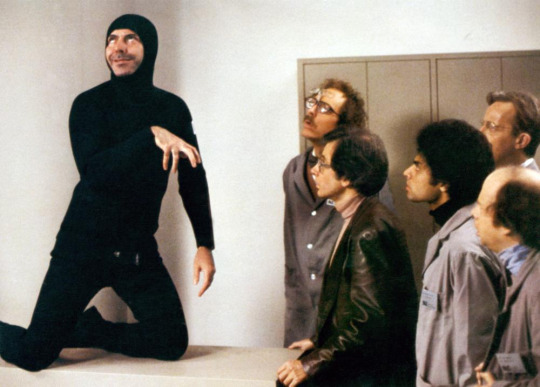
How do I even describe Simon? Alan Arkin is brainwashed by a group of overpaid intellectuals into believing he is descended from an alien toaster. Then he gets a messiah complex and starts gathering disciples as he rails against television, condiment packets, and muzak. It’s a little uneven at times, sure, but the satire is really inspired. The whole thing is like a combination of Mel Brooks, Stanley Kubrick, and Woody Allen’s styles, and it is quite hilarious for those who thrive on cult oddities.
PEEPING TOM (DIR. MICHAEL POWELL, 1960)
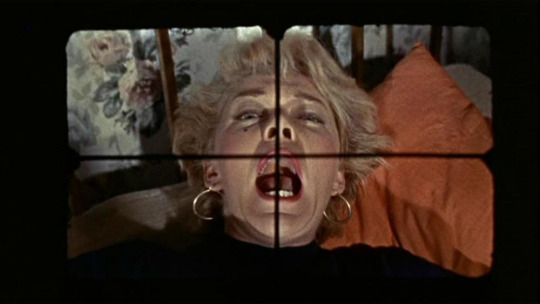
Though it came out the same year as Hitchcock’s Psycho and has been nearly as influential for horror cinema, Peeping Tom remains underseen by everyone save for film theorists. And what a shame that is, because this movie is more frightening than Psycho. Sure, that may be because Psycho is so predominant in popular culture and just so influential that it no longer has the same shock value, but there’s something about Peeping Tom that gets under my skin, something sad, even disgusting. I felt dirty after watching it-- and this is 2019!
MIDNIGHT MARY (DIR. WILLIAM WELLMAN, 1933)
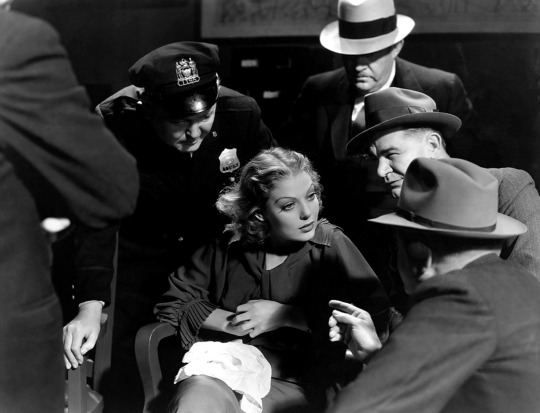
Loretta Young got one of her juiciest roles in this pre-code crime drama. Her Mary Martin is more than just a good girl forced into criminal circles-- she’s a complicated creature, compassionate and desperate and lonely and bitter and sensual all at once. This movie is a fast-paced, beautifully filmed ride, cloaked in that Depression-era cynicism that makes pre-code Hollywood of such interest to movie geeks the world over.
WILD BOYS OF THE ROAD (DIR. WILLIAM WELLMAN, 1933)
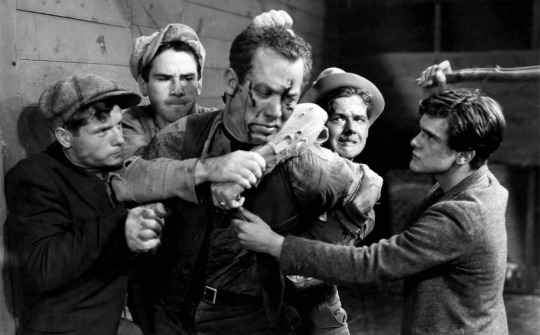
Wild Boys of the Road is a quintessential Depression-era movie, relentless in its bleakness and rage. That the main characters are all starving kids only looking for work makes their struggles all the harder to watch. William Wellman is quickly becoming one of my favorite directors: his gritty style and compact storytelling are just perfect for a ripped-from-the-headlines drama such as this. And the “happy” ending has one little moment that just knocks any smile you have right off your mug. Absolutely see this.
THE RUSSIANS ARE COMING, THE RUSSIANS ARE COMING (DIR. NORMAN JEWISON, 1966)
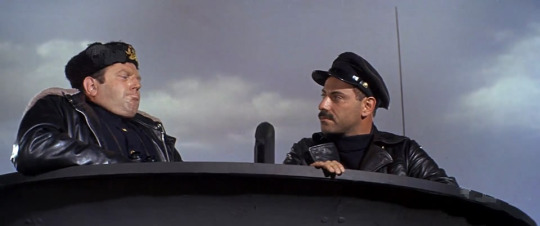
Sometimes, when you watch a movie only because a favorite actor is in it, you get subjected to pure trash like Free and Easy (oh, the things I do for Buster Keaton). Other times, you get cute gems like The Russians are Coming, The Russians are Coming, which, as you probably guessed, I mainly sought out for Alan Arkin. But the whole movie is hilarious, the best kind of farce comedy, populated by enjoyable characters and a sweet-tempered humanism that grounds the wackiness. While a little overlong, this movie is quite underrated-- and sadly, its satire of American xenophobia and Cold War panic is not as dated as we would like to believe.
ALL THE PRESIDENT’S MEN (DIR. ALAN J. PAKULA, 1976)
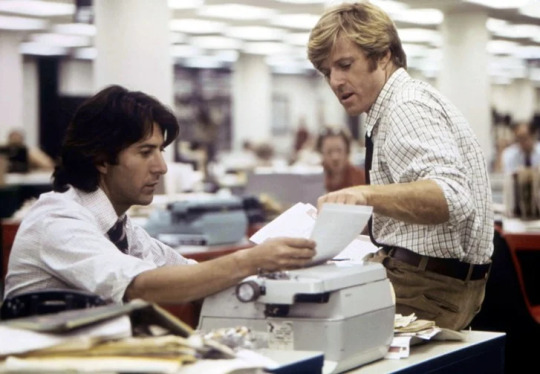
Who knew a political thriller where most people know the twist could be so intense and riveting? It’s about as nonsensical as feeling suspense when you watch a movie about the Titanic and hope the boat won’t sink-- but damn, it’s magical. All the President’s Men is real white-knuckle stuff, with Robert Redford and Dustin Hoffman projecting both youthful excitement and deep panic as they proceed with their investigation. It scarcely seems to have aged at all.
WHISPER OF THE HEART (DIR. YOSHIFUMI KONDOU, 1995)

There’s a scene near the end of Whisper of the Heart where the protagonist Shizuku shows the finished first draft of her fantasy novel to her first reader, the grandpa of one of her schoolmates. She weeps because it isn’t the perfect image she had in her head, despite how hard she worked on it, but the old man tells her that it takes polishing and discipline to make the work come to its full potential. Few movies about artists are so honest about how hard it can be, how unsupportive others can be in their demand that everyone be “practical.” As a writer who struggles to create and constantly doubts herself, this movie spoke strongly to me. I recommend it to any creative person.
THE PHANTOM OF THE PARADISE (DIR. BRIAN DE PALMA, 1976)

I’d been wanting to see this movie since my high school phan days. Holy crap, is it WEIRDER than I could have ever imagined, a true camp masterpiece. I’m shocked it was never tuned into a stage show actually, but then again, we would miss those trippy camera angles and we wouldn’t have Paul Williams as one of the greatest villains of all time.
DUEL (DIR. STEVEN SPIELBERG, 1971)
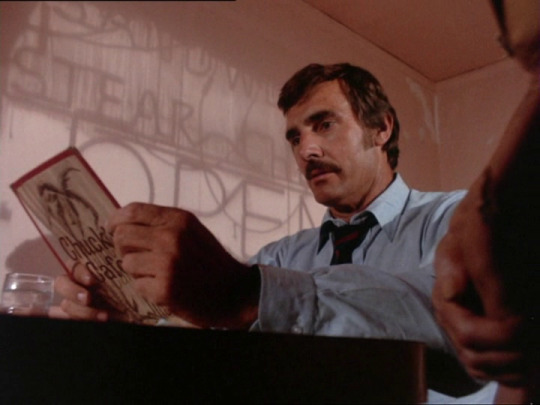
When people talk about the best movies made in the “Hitchcock without Hitchcock directing” tradition, why is Duel so seldom mentioned? The scene in the cafe, packed with paranoid tension and tense camerawork, alone should qualify it. Duel is most known as the movie which put the young Steven Spielberg on the map. It’s quite different from his later work, grittier and less whimsical for sure. Even the ending seems almost nihilistic, depending on how you view it. But damn, if it isn’t fine filmmaking.
CAROL (DIR. TODD HAYNES, 2015)

This gorgeous throwback to Douglas Sirk melodramas is also one of the best romantic movies I’ve seen in a while. Cate Blanchett and Rooney Mara have the sweetest, tenderest chemistry-- it was like seeing Lauren Bacall and Audrey Hepburn as love interests in a film. Unlike Sirk, there is little in the way of ripe melodrama here-- everything is underplayed, aching, mature. And I can say this is an adaptation that is better than the source book: it just feels so much warmer.
12 ANGRY MEN (DIR. SIDNEY LUMET, 1957

All I can say is that this was every bit equal to the hype. Common movie wisdom says people sitting and talking in a room is going to be boring on film, but movies like 12 Angry Men prove this is not so when you’ve got an excellently tense atmosphere, an inspired script, and a stable of fine actors to work with. Like The Russians are Coming, the Russians are Coming, this movie has not significantly aged-- much to society’s discredit.
A STAR IS BORN (DIR. GEORGE CUKOR, 1954)
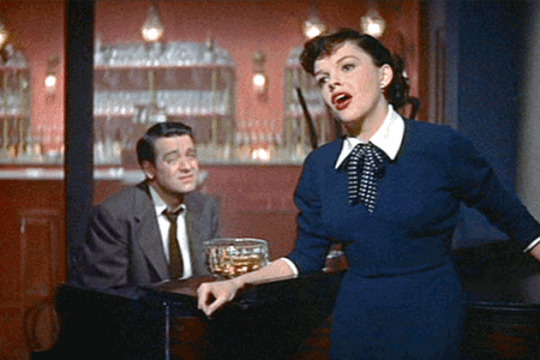
Another movie I went into not expecting to love as much as I did. When movies from the 20s or 30s tended to get remakes in the 1950s, I always find them too garish and big, victims of glossy Cinemascope and overlong runtimes. Compared to the lean 1937 classic original, I expected sheer indulgence from this three-hour remake. Instead, I got my heart torn out all over again-- the longer runtime is used well, fleshing out the characters to a greater degree. Judy Garland and James Mason both give what might be the best efforts of their respective careers, and the satire of the celebrity machine remains as relevant and scathing as ever.
BLANCANIEVES (DIR. PABLO BERGER, 2012)
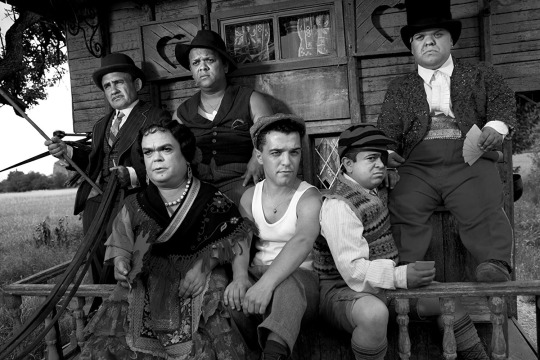
Oh, it feels like this movie was made for me specifically. It’s shot in gorgeous, expressionistic black-and-white. It’s set in the 1920s. It’s a clever adaptation of a classic fairy tale. It’s as funny and charming as it is bittersweet and macabre. Instead of more superhero movies, can we get more neo-silent movies like this? PLEASE?
THE FAVOURITE (DIR. YORGOS LANTHIMOS, 2018)
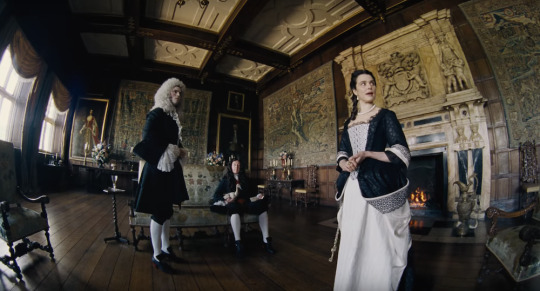
I’ve heard The Favourite described as a “bitchy lesbian Shakespeare play,” but this description, while a little true in terms of general tone, does not get to the heart of what makes this film brilliant. More than love or sex, this movie is about power-- particularly the corrupting influence of power. And it corrupts not only morals but love itself. Innocents become Machiavellian schemers. Lovers become sadomasochistic enemies. Good intentions turn to poison. This certainly isn’t a happy movie, but it is moving and, strangely enough, also hilarious. I was reminded of the chilly, satirical world of Kubrick’s Barry Lyndon more than once-- and for me, that is not a bad movie to be reminded of.
ON THE WATERFRONT (DIR. ELIA KAZAN, 1954)
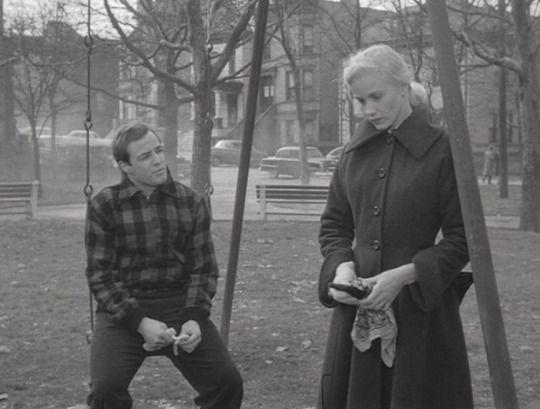
Another classic that’s been on my list forever that I was delighted to find worthy of its reputation. It’s a classic tale of redemption and social justice, perfectly acted and shot. While I still prefer A Streetcar Named Desire as far as Kazan is concerned, this might be a better movie in the objective sense. Actually, more than even Brando, Karl Malden is the acting highlight for me-- he plays a priest torn between staying silent or truly speaking for the Gospel by demanding justice for the poor parish he serves. Just brilliant work.
KLUTE (DIR. ALAN J. PAKULA, 1971)

A perfect thriller, just about, and a great example of the “NYC is hell on earth” subgenre of the 1960s and 1970s. Jane Fonda is a revelation: she feels so real, not at all like a starlet trying to seem normal if you know what I mean.
KISS KISS BANG BANG (DIR. SHANE BLACK, 2005)

As far as subversive noir goes, this is the most entertaining. I would put it up there with The Big Lebowski as far as goofy takes on Raymond Chandler are concerned-- I don’t even really know what to make of it, but I laughed my ass off anytime I wasn’t going “WHAT???”
What were your favorite film discoveries in 2019?
#thoughts#peeping tom#simon 1980#kiss kiss bang bang#intentions of murder#once upon a time in hollywood#joker#a star is born#blancanieves#the russians are coming the russians are coming#all the president's men#whisper of the heart#carol#the favourite#12 angry men#klute#the phantom of the paradise#on the waterfront#wild boys of the road#midnight mary#duel
151 notes
·
View notes
Text
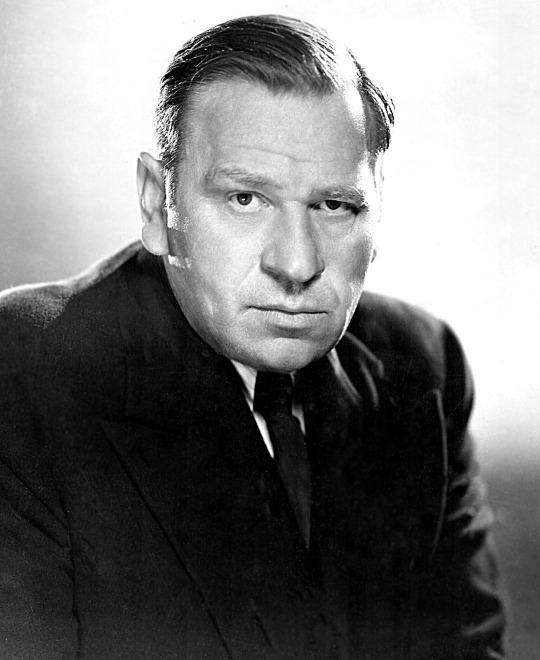
Wallace Fitzgerald Beery (April 1, 1885 – April 15, 1949) was an American film and stage actor. He is best known for his portrayal of Bill in Min and Bill (1930) opposite Marie Dressler, as Long John Silver in Treasure Island (1934), as Pancho Villa in Viva Villa! (1934), and his titular role in The Champ (1931), for which he won the Academy Award for Best Actor. Beery appeared in some 250 films during a 36-year career. His contract with Metro-Goldwyn-Mayer stipulated in 1932 that he would be paid $1 more than any other contract player at the studio. This made Beery the highest-paid film actor in the world during the early 1930s. He was the brother of actor Noah Beery Sr. and uncle of actor Noah Beery Jr.
For his contributions to the film industry, Beery was posthumously inducted into the Hollywood Walk of Fame with a motion pictures star in 1960. His star is located at 7001 Hollywood Boulevard.
Beery was born the youngest of three boys in 1885 in Clay County, Missouri, near Smithville. The Beery family left the farm in the 1890s and moved to nearby Kansas City, Missouri, where the father was a police officer. He may have had an older sister based on a suspected recent found Victorian photo of a boy who strongly resembles Beery and an older girl.
Beery attended the Chase School in Kansas City and took piano lessons as well, but showed little love for academic matters. He ran away from home twice, the first time returning after a short time, quitting school and working in the Kansas City train yards as an engine wiper. Beery ran away from home a second time at age 16, and joined the Ringling Brothers Circus as an assistant elephant trainer. He left two years later, after being clawed by a leopard.
Wallace Beery joined his older brother Noah in New York City in 1904, finding work in comic opera as a baritone and began to appear on Broadway as well as summer stock theatre. He appeared in The Belle of the West in 1905. His most notable early role came in 1907 when he starred in The Yankee Tourist to good reviews.
In 1913, he moved to Chicago to work for Essanay Studios. His first movie was likely a comedy short, His Athletic Wife (1913).
Beery was then cast as Sweedie, a Swedish maid character he played in drag in a series of short comedy films from 1914–16. Sweedie Learns to Swim (1914) co-starred Ben Turpin. Sweedie Goes to College (1915) starred Gloria Swanson, whom Beery married the following year.
Other Beery films (mostly shorts) from this period included In and Out (1914), The Ups and Downs (1914), Cheering a Husband (1914), Madame Double X (1914), Ain't It the Truth (1915), Two Hearts That Beat as Ten (1915), and The Fable of the Roistering Blades (1915).
The Slim Princess (1915), with Francis X. Bushman, was one of the earliest feature-length films. Beery also did The Broken Pledge (1915) and A Dash of Courage (1916), both with Swanson.
Beery was a German soldier in The Little American (1917) with Mary Pickford, directed by Cecil B. De Mille. He did some comedies for Mack Sennett, Maggie's First False Step (1917) and Teddy at the Throttle (1917), but he would gradually leave that genre and specialize in portrayals of villains prior to becoming a major leading man during the sound era.
In 1917 Beery portrayed Pancho Villa in Patria at a time when Villa was still active in Mexico. (Beery reprised the role 17 years later in Viva Villa!.)
Beery was a villainous German in The Unpardonable Sin (1919) with Blanche Sweet. For Paramount he did The Love Burglar (1919) with Wallace Reid; Victory (1919), with Jack Holt; Behind the Door (1919), as another villainous German; and The Life Line (1919) with Holt.
Beery was the villain in five major releases in 1920: 813; The Virgin of Stamboul for director Tod Browning; The Mollycoddle with Douglas Fairbanks, in which Fairbanks and Beery fistfought as they tumbled down a steep mountain (see the photograph in the gallery below); and in the non-comedic Western The Round-Up starring Roscoe Arbuckle as an obese cowboy in a well-received serious film with the tagline "Nobody loves a fat man." Beery continued his villainy cycle that year with The Last of the Mohicans, playing Magua.
Beery had a supporting part in The Four Horsemen of the Apocalypse (1920) with Rudolph Valentino. He was a villainous Tong leader in A Tale of Two Worlds (1921) and was the bad guy again in Sleeping Acres (1922), Wild Honey (1922), and I Am the Law (1922), which also featured his brother Noah Beery Sr.
Beery had a large then-rare heroic part as King Richard I (Richard the Lion-Hearted) in Robin Hood (1922), starring Douglas Fairbanks as Robin Hood. The lavish movie was a huge success and spawned a sequel the following year starring Beery in the title role of Richard the Lion-Hearted.
Beery had an important unbilled cameo as "the Ape-Man" in A Blind Bargain (1922) starring Lon Chaney (Beery is seen crouching, in full ape-man make-up, in the background of some of the movie's posters), and a supporting role in The Flame of Life (1923). He played another historical king, King Philip IV of Spain in The Spanish Dancer (1923) with Pola Negri.
Beery starred in an action melodrama, Stormswept (1923) for FBO Films alongside his elder brother, Noah Beery Sr.. The tagline on the movie's posters was "Wallace and Noah Beery – The Two Greatest Character Actors on the American Screen."
Beery played his third royal, the Duc de Tours, in Ashes of Vengeance (1923) with Norma Talmadge, then did Drifting (1923) with Priscilla Dean for director Browning.
Beery had the titular role in Bavu (1923), about Bolsheviks and the Russian Revolution. He co-starred with Buster Keaton in the comedy Three Ages (1923), the first feature Keaton wrote, produced, directed and starred in.
Beery was a villain in The Eternal Struggle (1923), a Mountie drama, produced by Louis B. Mayer, who would eventually become crucial to Beery's career. He was reunited with Dean and Browning in White Tiger (1923), then played the title role in the aforementioned Richard the Lion-Hearted (1923), a sequel to Robin Hood based on Sir Walter Scott's The Talisman.
Beery was in The Drums of Jeopardy (1923) and had a supporting role in The Sea Hawk (1924) for director Frank Lloyd. He also appeared in a supporting role for Clarence Brown's The Signal Tower (1925) starring Virginia Valli and Rockliffe Fellowes.
Beery signed a contract with Paramount Pictures. He had a support role in Adventure (1925) directed by Victor Fleming.
At First National, he was given the star role of Professor Challenger in Arthur Conan Doyle's dinosaur epic The Lost World (1925), arguably his silent performance most frequently screened in the modern era. Beery was top billed in Paramount's The Devil's Cargo (1925) for Victor Fleming, and supported in The Night Club (1925), The Pony Express (1925) for James Cruze, and The Wanderer (1925) for Raoul Walsh.
Beery starred in a comedy with Raymond Hatton, Behind the Front (1926) and he was a villain in Volcano! (1926). He was a bos'n in Old Ironsides (1926) for director James Cruze, with Charles Farrell in the romantic lead.
Beery had the title role in the baseball movie Casey at the Bat (1927). He was reunited with Hatton in Fireman, Save My Child (1927) and Now We're in the Air (1927). The latter also featured Louise Brooks who was Beery's co star in Beggars of Life (1928), directed by William Wellman, which was Paramount's first part-talkie movie.
There was a fourth comedy with Hatton, Wife Savers (1929), then Beery starred in Chinatown Nights (1929) for Wellman, produced by a young David O. Selznick. This film was shot silent with the voices dubbed in by the actors afterward, which worked spectacularly well with Beery's resonant voice, although the technique was not used again during the silent era for another full-length feature. Beery then played in Stairs of Sand (1929), a Western also starring Jean Arthur (who would play the leading lady in the Western film Shane twenty-four years later) before being fired by Paramount.
Irving Thalberg signed Beery to Metro-Goldwyn-Mayer as a character actor. The association began well when Beery played the savage convict "Butch", a role originally intended for Lon Chaney Sr. (who died that same year), in the highly successful 1930 prison film The Big House, directed by George W. Hill; Beery was nominated for the Academy Award for Best Actor.
Beery's second film for MGM was also a huge success: Billy the Kid (1930), an early widescreen picture in which he played Pat Garrett. He supported John Gilbert in Way for a Sailor (1930) and Grace Moore in A Lady's Morals (1930), portraying P. T. Barnum in the latter.
Beery was well established as a leading man and top rank character actor. What really made him one of the cinema's foremost stars was Min and Bill (1930) opposite Marie Dressler and directed by George W. Hill, a sensational success.
Beery made a third film with Hill, The Secret Six (1931), a gangster movie with Jean Harlow and Clark Gable in key supporting roles. The picture was popular but was surpassed at the box office by The Champ, which Beery made with Jackie Cooper for director King Vidor. The film, especially written for Beery, was another box office sensation. Beery shared the Best Actor Oscar with Fredric March. Though March received one vote more than Beery, Academy rules at the time—since rescinded—defined results within one vote of each other as "ties".[8]
Beery's career went from strength to strength. Hell Divers (1932), a naval airplane epic also starring a young Clark Gable billed under Beery, was a big hit. So too was the all-star Grand Hotel (1932), in which Beery was billed fourth, under Greta Garbo, John Barrymore, and Joan Crawford, one of the very few times he would not be top billed for the rest of his career. In 1932 his contract with MGM stipulated that he be paid a dollar more than any other contract player at the studio, making him the world's highest-paid actor.
Beery was a German wrestler in Flesh (1932), a hit directed by John Ford but Ford removed his directorial credit before the film opened, so the picture screened with no director listed despite being labeled "A John Ford Production" in the opening title card. Next Beery was in another all-star ensemble blockbuster, Dinner at Eight (1933), with Jean Harlow holding her own as Beery's comically bickering wife. This time Beery was billed third, under Marie Dressler and John Barrymore.
Beery was loaned out to the new Twentieth Century Pictures for the boisterously fast-paced comedy/drama The Bowery (1933), also starring George Raft, Jackie Cooper and Fay Wray, and featuring Pert Kelton, under the direction of Raoul Walsh. The picture was a smash hit.
Back at MGM he played the title role of Pancho Villa in Viva Villa! (1933) and was reunited with Dressler in Tugboat Annie (1933), a massive hit. He was Long John Silver in Treasure Island (1934), described as a box office "disappointment"[9] despite being MGM's third largest hit of the season, and remains currently viewed as featuring one of Beery's iconic performances.
Beery returned to Twentieth Century Productions for The Mighty Barnum (1934) in which he played P. T. Barnum again. Back at MGM he was a kindly sergeant in West Point of the Air (1935) and was in an all-star spectacular, China Seas (1935), this time billed beneath Clark Gable.
O'Shaughnessy's Boy (1935) reunited Beery and Jackie Cooper. He had the lead as the drunken uncle in MGM's adaptation of Ah, Wilderness! (1936) and went back to Twentieth Century – now 20th Century Fox – for A Message to Garcia (1936).
At MGM he was in Old Hutch (1936) and The Good Old Soak (1937) then he was back at Fox for Slave Ship (1937), taking second billing under Warner Baxter, a rarity for Beery after Min and Bill catapulted his career into the stratosphere in 1931, during which he received top billing in all but six films (Min and Bill, Grand Hotel, Tugboat Annie, Dinner at Eight, China Seas and Slave Ship).
The status of Beery's films went into a decline, possibly due to a scandal in which Beery was implicated in the death of Ted Healy in 1937, which was apparently kept out of the newspapers by the studio's "fixer" Eddie Mannix, who eventually became head of MGM. After an abrupt European vacation, Beery was in The Bad Man of Brimstone (1938) with Dennis O'Keefe (and Noah Beery Sr. in a cameo role as a bartender), Port of Seven Seas (1938) with Maureen O'Sullivan, Stablemates (1938) with Mickey Rooney, Stand Up and Fight (1939) with Robert Taylor, Sergeant Madden (1939) with Tom Brown, Thunder Afloat (1939) with Chester Morris, The Man from Dakota (1940) with Dolores del Río, and 20 Mule Team (1940) with Marjorie Rambeau, Anne Baxter and Noah Beery Jr., enjoying top billing in all of them.
Wyoming (1940) teamed Beery with Marjorie Main. After The Bad Man (1941), which also stars Lionel Barrymore and future US president Ronald Reagan, and was the remake of a Walter Huston picture, MGM reunited Beery and Main in Barnacle Bill (1941), The Bugle Sounds (1941), and Jackass Mail (1942).
Beery did a war film, Salute to the Marines (1943) then was back with Main in Rationing (1944). Barbary Coast Gent (1944), a broad Western comedy in which Beery played a bombastic con man, teamed him with Binnie Barnes. He did another war film, This Man's Navy (1945), then made another Western with Main, Bad Bascomb (1946), a huge hit, helped by Margaret O'Brien's casting.
The Mighty McGurk (1947) put Beery with another child star of the studio, Dean Stockwell. Alias a Gentleman (1947) was the first of Beery's movies to lose money during the sound era. Beery received top billing for A Date with Judy (1949), a hugely popular musical featuring Elizabeth Taylor. Beery's last film, again featuring Main, Big Jack (1949), also lost money according to Mannix's reckoning.
On March 27, 1916, at the age of 30, Beery married 17-year-old actress Gloria Swanson in Los Angeles. The two had co-starred in Sweedie Goes to College. Although Beery had enjoyed popularity with his Sweedie shorts, his career had taken a dip, and during the marriage to Swanson, he relied on her as a breadwinner. According to Swanson's autobiography, Beery raped her on their wedding night, and later tricked her into swallowing an abortifacient when she was pregnant, which caused her to lose their child. Swanson filed for divorce in 1917 and it was finalized in 1918.
On August 4, 1924, Beery married actress Rita Gilman (Mary Areta Gilman; 1898–1986) in Los Angeles. The couple adopted Carol Ann Priester (1930–2013), daughter of Rita Beery's mother's half-sister, Juanita Priester (née Caplinger; 1899–1931) and her husband, Erwin William Priester (1897–1969). After 14 years of marriage, Rita filed for divorce on May 1, 1939, in Carson City, Ormsby County, Nevada. Within 20 minutes of filing, she won the decree. Rita remarried 15 days later, on May 16, 1939, to Jessen Albert D. Foyt (1907–1945), filing her marriage license with the same county clerk in Carson City.
n December 1937, comedic actor Ted Healy was involved in a drunken altercation at Cafe Trocadero on the Sunset Strip. E. J. Fleming, in his 2005 book, The Fixers: Eddie Mannix, Howard Strickling and the MGM Publicity Machine, asserts that Healy was attacked by three men:
Future James Bond producer Albert "Cubby" Broccoli
Local mob figure Pat DiCicco (who was Broccoli's cousin as well as the former husband of Thelma Todd and the future husband of Gloria Vanderbilt)
Wallace Beery
Fleming writes that this beating led to Healy's death a few days later.
Around December 1939, Beery, recently divorced, adopted a seven-month-old girl, Phyllis Ann Beery. Phyllis appeared in MGM publicity photos when adopted, but was never mentioned again. Beery told the press he had taken the girl in from a single mother, recently divorced, but he had filed no official adoption papers.
Beery was considered misanthropic and difficult to work with by many of his colleagues. Mickey Rooney, one of Beery's few co-stars to consistently speak highly of him in subsequent decades, related in his autobiography that Howard Strickling, MGM's head of publicity, once went to Louis B. Mayer to complain that Beery was stealing props from the studio's sets. "And that wasn't all", Rooney continued. "He went on for some minutes about the trouble that Beery was always causing him ... Mayer sighed and said, 'Yes, Howard, Beery's a son of a bitch. But he's our son of a bitch.' Strickling got the point. A family has to be tolerant of its black sheep, particularly if they brought a lot of money into the family fold, which Beery certainly did."
Child actors, in particular, recalled unpleasant encounters with Beery. Jackie Cooper, who made several films with him early in his career, called him "a big disappointment", and accused him of upstaging, and other attempts to undermine his performances, out of what Cooper presumed was jealousy. He recalled impulsively throwing his arms around Beery after one especially heartfelt scene, only to be gruffly pushed away. Child actress Margaret O'Brien claimed that she had to be protected by crew members from Beery's insistence on constantly pinching her.
In his memoir Rooney described Beery as "... a lovable, shambling kind of guy who never seemed to know that his shirttail belonged inside his pants, but always knew when a little kid actor needed a smile and a wink or a word of encouragement." He did concede that "not everyone loved [Beery] as much as I did." Beery, by contrast, described Rooney as a "brat", but a "fine actor". Future author Ray Bradbury recalled meeting Beery as a young boy on a Hollywood street and that his autograph request resulted in Beery cursing and spitting on him.
Beery owned and flew his own planes, one a Howard DGA-11. On April 15, 1933, he was commissioned a lieutenant commander in the United States Navy Reserve at NRAB Long Beach. One of his proudest achievements was catching the largest giant black sea bass in the world — 515 pounds (234 kg) — off Santa Catalina Island in 1916, a record that stood for 35 years.
A noteworthy episode in Beery's life is chronicled in the fifth episode of Ken Burns' documentary The National Parks: America's Best Idea: In 1943, President Franklin D. Roosevelt signed an executive order creating Jackson Hole National Monument to protect the land adjoining the Grand Tetons in Wyoming. Local ranchers, outraged at the loss of grazing lands, compared FDR's action to Hitler's taking of Austria. Led by an aging Beery, they protested by herding 500 cattle across the monument lands without a permit.
On February 13, 1948, Gloria Schumm (aka Gloria Smith Beery, née Florence W. Smith; 1916–1989) filed a paternity suit against Beery. Beery, through his lawyer, Norman Ronald Tyre (1910–2002), initially offered $6,000 as a settlement, but denied being the father. Gloria had given birth on February 7, 1948, to Johan Richard Wallace Schumm. Gloria, in 1944, divorced Stuttgart-born Hollywood actor Hans Schumm (né Johann Josef Eugen Schumm; 1896–1990), but remarried him August 21, 1947, after realizing that she was pregnant. Prior to remarrying Hans Schumm, Gloria, on August 4, 1947, met with Beery at his home, where he gave her the name and address of a physician to submit an examination.[29] At or around that time, she also asked Beery to marry her to legitimatize the expected child (words), which Beery refused.
According to newspapers, Gloria claimed to have been intimate with Wallace Beery on or about May 1, 1947, at his home in Beverly Hills (in the court proceedings, however, she claimed to have been intimate with Beery on May 17, 1947). Beery conceded that he had known Gloria for about 15 years and that, under the pseudonym "Gloria Whitney", she had played bit roles in 6 films that he starred in. She again separated from Hans Schumm April 15, 1948.
Beery died of a heart attack on April 15, 1949 (14 months, 1 week, and 1 day after Johan Schumm's birth) — while the suit was pending. Beery had been reading a newspaper at his Beverly Hills home when he collapsed.[31] His body was interred at Forest Lawn Memorial Park in Glendale, California. The inscription on his grave reads, "No man is indispensable but some are irreplaceable."
Beery died intestate. In the paternity suit, Gloria Schumm's attorneys demanded $104,135 against Beery's $2,220,000 estate. In February 1952, Judge Newcomb Condee approved a $26,750 settlement from the estate. Gloria Schumm accepted the settlement, and Beery's paternity of Johan Schumm was not acknowledged.
When Mickey Rooney's father died less than a year later, Rooney arranged to have him buried next to his old friend. "I thought it was fitting that these two comedians should rest in peace, side by side", he wrote.
The paternity suit, and subsequent suits – including appeals – extended through about 1952 and were internationally publicized, particularly in gossip columns and tabloids. The litigation has endured as case law with, among other things, treatises addressing the rights of illegitimate offspring against legitimate heirs in races for inheritance.
The upshot was that Schumm's paternity suit against Beery's estate put would-be half-siblings and other would-be family legatees, including a would-be uncle, Noah Beery, Sr., in the position as de facto defendants. Phyllis Ann Riley was not named in Beery's will. Part of plaintiff's claim, initially, hinged on whether an oral agreement was binding. Gloria had claimed that Beery, while alive, agreed to provide for the child. However, on November 17, 1949, Judge William B. McKesson (1895–1967) threw out Gloria's claim. The judge reasoned that any oral agreement between the two, specifically any that was intended to provide for maintenance and care of a minor, was not binding because the amount allegedly agreed upon was in excess of $500, which must be made in writing.
Another matter in the case hinged on a "peppercorn" rule. That is, in order for any agreement, oral or written, between Wallace and Gloria to be binding, there must be consideration. The court, initially, found that Beery agreed to an oral contract where Gloria would (i) include the name "Wallace" in the child's name if a male, or "Wally" if a female, and (ii) refrain from filing a paternity suit that both agreed would damage Beery's "social and professional standing as a prominent motion picture star."
Generally, under California state law at the time, a father who neither marries the mother nor acknowledges paternity does not have a right to name the child. That right belongs to the mother. In exchange for Gloria's promise to name the child "Wallace" or "Wally" (the promise representing a form of consideration), Wallace Beery agreed to arrange for the payment of $100 per week to the child (as a third-party beneficiary under the contract), plus a lump sum of $25,000 to the child when he or she attained age 21, in addition to the customary obligation to pay for the "maintenance, support and education according to the station in life and standard of living of Wallace Beery."
For his contributions to the film industry, Wallace Beery posthumously received a motion pictures star on the Hollywood Walk of Fame in 1960. His star is located at 7001 Hollywood Boulevard.
Beery is mentioned in the film Barton Fink, in which the lead character has been hired to write a wrestling screenplay to star Beery.
In the 1968 comedy "The Projectionist" actor and comedian Chuck McCann impersonates Beery quoting a line from "Min and Bill"
#wallace beery#silent era#silent hollywood#silent movie stars#golden age of hollywood#classic movie stars#classic hollywood#old hollywood#1910s movies#1920s hollywood#1930s hollywood#1940s hollywood
3 notes
·
View notes
Text
1861 Georges Méliès 1875 D.W. Griffith 1879 Victor Sjöström 1880 Tod Browning 1881 Cecil B. DeMille 1884 Robert Flaherty 1885 Allan Dwan / Sacha Guitry / G.W. Pabst / Erich von Stroheim 1886 Michael Curtiz / Henry King / John Cromwell 1887 Raoul Walsh 1888 F.W. Murnau 1889 Charles Chaplin / Jean Cocteau / Carl Theodor Dreyer / Victor Fleming / Abel Gance / James Whale 1890 Clarence Brown / Fritz Lang 1892 Ernst Lubitsch 1893 William Dieterle 1894 Frank Borzage / John Ford / Jean Renoir / King Vidor / Josef von Sternberg 1895 Buster Keaton 1896 Julien Duvivier / Howard Hawks / Leo McCarey / Dziga Vertov / William Wellman 1897 Frank Capra / Douglas Sirk 1898 René Clair / Sergei Eisenstein / Henry Hathaway / Mitchell Leisen / Kenji Mizoguchi / Preston Sturges 1899 George Cukor / Alfred Hitchcock 1900 Luis Buñuel / Mervyn LeRoy / Robert Siodmak 1901 Robert Bresson / Vittorio De Sica 1902 Emeric Pressburger / Max Ophüls / William Wyler 1903 Vincente Minnelli / Yasujiro Ozu 1904 Delmer Daves / Terence Fisher / George Stevens / Jacques Tourneur / Edgar G. Ulmer 1905 Mikio Naruse / Michael Powell / Otto Preminger / Jean Vigo 1906 Jacques Becker / Marcel Carné / John Huston / Anthony Mann / Carol Reed / Roberto Rossellini / Luchino Visconti / Billy Wilder 1907 Henri-Georges Clouzot / Joseph H. Lewis / Jacques Tati / Fred Zinnemann 1908 Tex Avery / Edward Dmytryk / Phil Karlson / David Lean / Manoel de Oliveira 1909 Elia Kazan / Joseph Losey / Joseph L. Mankiewicz 1910 John Sturges / Akira Kurosawa 1911 Jules Dassin / Nicholas Ray 1912 Michelangelo Antonioni / Samuel Fuller / Gene Kelly / Alexander Mackendrick / Don Siegel 1913 André de Toth / Mark Robson / Frank Tashlin 1914 Mario Bava / William Castle / Robert Wise 1915 Orson Welles 1916 Budd Boetticher / Richard Fleischer / George Sidney 1917 Maya Deren / Jean-Pierre Melville 1918 Robert Aldrich / Ingmar Bergman 1920 Federico Fellini / Eric Rohmer 1921 Luis García Berlanga / Miklós Jancsó / Chris Marker / Satyajit Ray 1922 Blake Edwards / Jonas Mekas / Pier Paolo Pasolini / Arthur Penn / Alain Resnais 1923 Ousmane Sembene / Seijun Suzuki 1924 Stanley Donen / Sidney Lumet 1925 Robert Altman / Claude Lanzmann / Sam Peckinpah / Maurice Pialat 1926 Roger Corman / Shohei Imamura / Jerry Lewis / Andrzej Wajda 1927 Kenneth Anger / Ken Russell 1928 Stanley Kubrick / Jacques Rivette / Nicolas Roeg / Agnès Varda / Andy Warhol 1929 Hal Ashby / John Cassavetes / Alejandro Jodorowsky / Sergio Leone 1930 Claude Chabrol / Clint Eastwood / John Frankenheimer / Kinji Fukasaku / Jean-Luc Godard / Frederick Wiseman 1931 Jacques Demy / Mike Nichols / Ermanno Olmi 1932 Milos Forman / Monte Hellman / Louis Malle / Nagisa Oshima / Carlos Saura / Andrei Tarkovsky / François Truffaut 1933 John Boorman / Stan Brakhage / Roman Polanski / Bob Rafelson / Jean-Marie Straub 1934 Sydney Pollack 1935 Woody Allen / Theo Angelopoulos 1936 Hollis Frampton / Danièle Huillet / Ken Loach 1937 Ridley Scott 1938 Paul Verhoeven 1939 Peter Bogdanovich / Francis Ford Coppola / William Friedkin / Glauber Rocha 1940 Dario Argento / Brian De Palma / Victor Erice / Terry Gilliam / Abbas Kiarostami / George A. Romero 1941 Bernardo Bertolucci / Stephen Frears / Patricio Guzmán / Krzysztof Kieslowski / Hayao Miyazaki / Raúl Ruiz / Bertrand Tavernier 1942 Peter Greenaway / Michael Haneke / Werner Herzog / Walter Hill / Martin Scorsese 1943 Roy Andersson / David Cronenberg / Mike Leigh / Terrence Malick / Michael Mann / Alan Rudolph 1944 Charles Burnett / Jonathan Demme / George Lucas / Peter Weir 1945 Terence Davies / Rainer Werner Fassbinder / George Miller / Wim Wenders 1946 Joe Dante / Claire Denis / David Lynch / Paul Schrader / Oliver Stone / John Woo 1947 Hou Hsiao-hsien / Takeshi Kitano / Rob Reiner / Steven Spielberg / Edward Yang 1948 John Carpenter / Philippe Garrel / Errol Morris 1949 Pedro Almodóvar 1950 Chantal Akerman / John Landis / John Sayles 1951 Kathryn Bigelow / Jean-Pierre Dardenne / Abel Ferrara / Aleksandr Sokurov / Robert Zemeckis / Zhang Yimou 1952 Jacques Audiard / Gus Van Sant 1953 Jim Jarmusch 1954 James Cameron / Jane Campion / Joel Coen / Luc Dardenne / Ang Lee / Michael Moore 1955 Olivier Assayas / Béla Tarr / Johnnie To 1956 Danny Boyle / Guy Maddin / Lars von Trier / Wong Kar-wai 1957 Ethan Coen / Aki Kaurismäki / Spike Lee / Mohsen Makhmalbaf / Tsai Ming-liang 1958 Tim Burton 1959 Nuri Bilge Ceylan / Pedro Costa / Sam Raimi 1960 Leos Carax / Atom Egoyan / Hong Sang-soo / Richard Linklater / Takashi Miike / Jafar Panahi 1961 Alfonso Cuarón / Todd Haynes / Peter Jackson / Alexander Payne / Abderrahmane Sissako / Michael Winterbottom 1962 David Fincher / Hirokazu Koreeda / Kenneth Lonergan 1963 Michel Gondry / Alejandro González Iñárritu / Park Chan-wook / Steven Soderbergh / Quentin Tarantino 1964 Guillermo del Toro / Kelly Reichardt / Andrey Zvyagintsev 1965 Jonathan Glazer 1966 Lucrecia Martel 1967 Denis Villeneuve 1969 Wes Anderson / Darren Aronofsky / Noah Baumbach / Bong Joon-ho / James Gray / Spike Jonze / Steve McQueen / Lynne Ramsay 1970 Paul Thomas Anderson / Jia Zhangke / Christopher Nolan / Apichatpong Weerasethakul 1971 Sofia Coppola / Carlos Reygadas Directors listed by key production country (Country of birth, if it differs, is listed in brackets) Argentina Lucrecia Martel Australia Jane Campion (New Zealand) / George Miller Austria Michael Haneke (Germany) Belgium Chantal Akerman / Jean-Pierre Dardenne & Luc Dardenne Brazil Glauber Rocha Canada David Cronenberg / Atom Egoyan (Egypt) / Guy Maddin / Denis Villeneuve China Jia Zhangke / Zhang Yimou Denmark Carl Theodor Dreyer / Lars von Trier Finland Aki Kaurismäki France Olivier Assayas / Jacques Audiard / Jacques Becker / Robert Bresson / Leos Carax / Marcel Carné / Claude Chabrol / René Clair / Henri-Georges Clouzot / Jean Cocteau / Jacques Demy / Claire Denis / Julien Duvivier / Abel Gance / Philippe Garrel / Jean-Luc Godard / Sacha Guitry (Russia) / Patricio Guzmán (Chile) / Claude Lanzmann / Louis Malle / Chris Marker / Georges Méliès / Jean-Pierre Melville / Max Ophüls (Germany) / Maurice Pialat / Roman Polanski / Jean Renoir / Alain Resnais / Jacques Rivette / Eric Rohmer / Raúl Ruiz (Chile) / Jean-Marie Straub & Danièle Huillet / Jacques Tati / Bertrand Tavernier / François Truffaut / Agnès Varda (Belgium) / Jean Vigo Germany / West Germany Rainer Werner Fassbinder / Werner Herzog / F.W. Murnau / G.W. Pabst (Austria-Hungary) / Wim Wenders Greece Theo Angelopoulos Hong Kong Wong Kar-wai (China) / Johnnie To / John Woo (China) Hungary Miklós Jancsó / Béla Tarr India Satyajit Ray Iran Abbas Kiarostami / Mohsen Makhmalbaf / Jafar Panahi Italy Michelangelo Antonioni / Dario Argento / Mario Bava / Bernardo Bertolucci / Vittorio De Sica / Federico Fellini / Sergio Leone / Ermanno Olmi / Pier Paolo Pasolini / Roberto Rossellini / Luchino Visconti Japan Kinji Fukasaku / Shohei Imamura / Takeshi Kitano / Hirokazu Koreeda / Akira Kurosawa / Takashi Miike / Hayao Miyazaki / Kenji Mizoguchi / Mikio Naruse / Nagisa Oshima / Yasujiro Ozu / Seijun Suzuki Mauritania Abderrahmane Sissako Mexico Luis Buñuel (Spain) / Alejandro Jodorowsky (Chile) / Carlos Reygadas New Zealand Peter Jackson Poland Krzysztof Kieslowski / Andrzej Wajda Portugal Pedro Costa / Manoel de Oliveira Russia / USSR Sergei Eisenstein (Latvia) / Aleksandr Sokurov / Andrei Tarkovsky / Dziga Vertov (Poland) / Andrey Zvyagintsev Senegal Ousmane Sembene South Korea Bong Joon-ho / Hong Sang-soo / Park Chan-wook Spain Pedro Almodóvar / Victor Erice / Luis García Berlanga / Carlos Saura Sweden Roy Andersson / Ingmar Bergman / Victor Sjöström Taiwan Hou Hsiao-hsien (China) / Tsai Ming-liang (Malaysia) / Edward Yang (China) Thailand Apichatpong Weerasethakul Turkey Nuri Bilge Ceylan UK John Boorman / Danny Boyle / Terence Davies / Terence Fisher / Stephen Frears / Jonathan Glazer / Peter Greenaway / David Lean / Mike Leigh / Ken Loach / Joseph Losey (USA) / Alexander Mackendrick (USA) / Steve McQueen / Michael Powell / Michael Powell (UK) & Emeric Pressburger (Hungary) / Lynne Ramsay / Carol Reed / Nicolas Roeg / Ken Russell / Michael Winterbottom USA (A-B) Robert Aldrich / Woody Allen / Robert Altman / Paul Thomas Anderson / Wes Anderson / Kenneth Anger / Darren Aronofsky / Hal Ashby / Tex Avery / Noah Baumbach / Kathryn Bigelow / Budd Boetticher / Peter Bogdanovich / Frank Borzage / Stan Brakhage / Clarence Brown / Tod Browning / Charles Burnett / Tim Burton USA (C-D) James Cameron (Canada) / Frank Capra (Italy) / John Carpenter / John Cassavetes / William Castle / Charles Chaplin (UK) / Joel Coen & Ethan Coen / Francis Ford Coppola / Sofia Coppola / Roger Corman / John Cromwell / Alfonso Cuarón (Mexico) / George Cukor / Michael Curtiz (Hungary) / Joe Dante / Jules Dassin / Delmer Daves / Brian De Palma / André de Toth (Hungary) / Guillermo del Toro (Mexico) / Cecil B. DeMille / Jonathan Demme / Maya Deren (Ukraine) / William Dieterle (Germany) / Edward Dmytryk (Canada) / Stanley Donen / Stanley Donen & Gene Kelly / Allan Dwan (Canada) USA (E-G) Clint Eastwood / Blake Edwards / Abel Ferrara / David Fincher / Robert Flaherty / Richard Fleischer / Victor Fleming / John Ford / Milos Forman (Czechoslovakia) / Hollis Frampton / John Frankenheimer / William Friedkin / Samuel Fuller / Terry Gilliam / Michel Gondry (France) / Alejandro González Iñárritu (Mexico) / D.W. Griffith / James Gray USA (H-L) Henry Hathaway / Howard Hawks / Todd Haynes / Monte Hellman / Walter Hill / Alfred Hitchcock (UK) / John Huston / Jim Jarmusch / Spike Jonze / Phil Karlson / Elia Kazan (Turkey) / Buster Keaton / Henry King / Stanley Kubrick / John Landis / Fritz Lang (Austria) / Ang Lee (Taiwan) / Spike Lee / Mitchell Leisen / Mervyn LeRoy / Jerry Lewis / Joseph H. Lewis / Richard Linklater / Kenneth Lonergan / Ernst Lubitsch (Germany) / George Lucas / Sidney Lumet / David Lynch USA (M-R) Terrence Malick / Joseph L. Mankiewicz / Anthony Mann / Michael Mann / Leo McCarey / Jonas Mekas (Lithuania) / Vincente Minnelli / Michael Moore / Errol Morris / Mike Nichols (Germany) / Christopher Nolan (UK) / Alexander Payne / Sam Peckinpah / Arthur Penn / Sydney Pollack / Otto Preminger (Austria-Hungary) / Sam Raimi / Bob Rafelson / Nicholas Ray / Kelly Reichardt / Rob Reiner / Mark Robson (Canada) / George A. Romero / Alan Rudolph USA (S-U) John Sayles / Paul Schrader / Martin Scorsese / Ridley Scott (UK) / George Sidney / Don Siegel / Robert Siodmak (Germany) / Douglas Sirk (Germany) / Steven Soderbergh / Steven Spielberg / George Stevens / Oliver Stone / John Sturges / Preston Sturges / Quentin Tarantino / Frank Tashlin / Jacques Tourneur (France) / Edgar G. Ulmer (Austria-Hungary) USA (V-Z) Gus Van Sant / Paul Verhoeven (Netherlands) / King Vidor / Josef von Sternberg (Austria) / Erich von Stroheim (Austria) / Raoul Walsh / Andy Warhol / Peter Weir (Australia) / Orson Welles / William Wellman / James Whale (UK) / Billy Wilder (Austria-Hungary) / Robert Wise / Frederick Wiseman / William Wyler (Germany) / Robert Zemeckis / Fred Zinnemann (Austria-HungaryJonas Mekas)
5 notes
·
View notes
Text
Utopia and Apocalypse: Pynchon’s Populist/Fatalist Cinema

The rhythmic clapping resonates inside these walls, which are hard and glossy as coal: Come-on! Start-the-show! Come-on! Start-the-show! The screen is a dim page spread before us, white and silent. The film has broken, or a projector bulb has burned out. It was difficult even for us, old fans who’ve always been at the movies (haven’t we?) to tell which before the darkness swept in.
--from the last page of Gravity’s Rainbow
To begin with a personal anecdote: Writing my first book (to be published) in the late 1970s, an experimental autobiography titled Moving Places: A Life at the Movies (Harper & Row, 1980), published in French as Mouvements: Une vie au cinéma (P.O.L, 2003), I wanted to include four texts by other authors—two short stories (“In Dreams Begin Responsibilities” by Delmore Schwartz, “The Secret Integration” by Thomas Pynchon) and two essays (“The Carole Lombard in Macy’s Window” by Charles Eckert, “My Life With Kong” by Elliott Stein)—but was prevented from doing so by my editor, who argued that because the book was mine, texts by other authors didn’t belong there. My motives were both pluralistic and populist: a desire both to respect fiction and non-fiction as equal creative partners and to insist that the book was about more than just myself and my own life. Because my book was largely about the creative roles played by the fictions of cinema on the non-fictions of personal lives, the anti-elitist nature of cinema played a crucial part in these transactions.`
In the case of Pynchon’s 1964 story—which twenty years later, in his collection Slow Learner, he would admit was the only early story of his that he still liked—the cinematic relevance to Moving Places could be found in a single fleeting but resonant detail: the momentary bonding of a little white boy named Tim Santora with a black, homeless, alcoholic jazz musician named Carl McAfee in a hotel room when they discover that they’ve both seen Blood Alley (1955), an anticommunist action-adventure with John Wayne and Lauren Bacall, directed by William Wellman. Pynchon mentions only the film’s title, but the complex synergy of this passing moment of mutual recognition between two of its dissimilar viewers represented for me an epiphany, in part because of the irony of such casual camaraderie occurring in relation to a routine example of Manichean Cold War mythology. Moreover, as a right-wing cinematic touchstone, Blood Alley is dialectically complemented in the same story by Tim and his friends categorizing their rebellious schoolboy pranks as Operation Spartacus, inspired by the left-wing Spartacus (1960) of Kirk Douglas, Dalton Trumbo, and Stanley Kubrick.
For better and for worse, all of Pynchon’s fiction partakes of this populism by customarily defining cinema as the cultural air that everyone breathes, or at least the river in which everyone swims and bathes. This is equally apparent in the only Pynchon novel that qualifies as hackwork, Inherent Vice (2009), and the fact that Paul Thomas Anderson’s adaptation of it is also his worst film to date—a hippie remake of Chinatown in the same way that the novel is a hippie remake of Raymond Chandler and Ross Macdonald—seems logical insofar as it seems to have been written with an eye towards selling the screen rights. As Geoffrey O’Brien observed (while defending this indefensible book and film) in the New York Review of Books (January 3, 2015), “Perhaps the novel really was crying out for such a cinematic transformation, for in its pages people watch movies, remember them, compare events in the ‘real world’ to their plots, re-experience their soundtracks as auditory hallucinations, even work their technical components (the lighting style of cinematographer James Wong Howe, for instance) into aspects of complex conspiratorial schemes.” (Despite a few glancing virtues, such as Josh Brolin’s Nixonesque performance as "Bigfoot" Bjornsen, Anderson’s film seems just as cynical as its source and infused with the same sort of misplaced would-be nostalgia for the counterculture of the late 60s and early 70s, pitched to a generation that didn’t experience it, as Bertolucci’s Innocents: The Dreamers.)
From The Crying of Lot 49’s evocation of an orgasm in cinematic terms (“She awoke at last to find herself getting laid; she’d come in on a sexual crescendo in progress, like a cut to a scene where the camera’s already moving”) to the magical-surreal guest star appearance of Mickey Rooney in wartime Europe in Gravity’s Rainbow, cinema is invariably a form of lingua franca in Pynchon’s fiction, an expedient form of shorthand, calling up common experiences that seem light years away from the sectarianism of the politique des auteurs. This explains why his novels set in mid-20th century, such as the two just cited, when cinema was still a common currency cutting across classes, age groups, and diverse levels of education, tend to have the greatest number of movie references. In Gravity’s Rainbow—set mostly in war-torn Europe, with a few flashbacks to the east coast U.S. and flash-forwards to the contemporary west coast—this even includes such anachronistic pop ephemera as the 1949 serial King of the Rocket Men and the 1955 Western The Return of Jack Slade (which a character named Waxwing Blodgett is said to have seen at U.S. Army bases during World War 2 no less than twenty-seven times), along with various comic books.
Significantly, “The Secret Integration”, a title evoking both conspiracy and countercultural utopia, is set in the same cozy suburban neighborhood in the Berkshires from which Tyrone Slothrop, the wartime hero or antihero of Gravity’s Rainbow (1973), aka “Rocketman,” springs, with his kid brother and father among the story’s characters. It’s also the same region where Pynchon himself grew up. And Gravity’s Rainbow, Pynchon’s magnum opus and richest work, is by all measures the most film-drenched of his novels in its design as well as its details—so much so that even its blocks of text are separated typographically by what resemble sprocket holes. Unlike, say, Vineland (1990), where cinema figures mostly in terms of imaginary TV reruns (e.g., Woody Allen in Young Kissinger) and diverse cultural appropriations (e.g., a Noir Center shopping mall), or the post-cinematic adventures in cyberspace found in the noirish (and far superior) east-coast companion volume to Inherent Vice, Bleeding Edge (2013), cinema in Gravity’s Rainbow is basically a theatrical event with a social impact, where Fritz Lang’s invention of the rocket countdown as a suspense device (in the 1929 Frau im mond) and the separate “frames” of a rocket’s trajectory are equally relevant and operative factors. There are also passing references to Lang’s Der müde Tod, Die Nibelungen, Dr. Mabuse, der Spieler, and Metropolis—not to mention De Mille’s Cleopatra, Dumbo, Freaks, Son of Frankenstein, White Zombie, at least two Fred Astaire and Ginger Rogers musicals, Pabst, and Lubitsch—and the epigraphs introducing the novel’s second and third sections (“You will have the tallest, darkest leading man in Hollywood — Merian C. Cooper to Fay Wray” and “Toto, I have a feeling we’re not in Kansas any more…. –Dorothy, arriving in Oz”) are equally steeped in familiar movie mythology.
These are all populist allusions, yet the bane of populism as a rightwing curse is another near-constant in Pynchon’s work. The same ambivalence can be felt in the novel’s last two words, “Now everybody—“, at once frightening and comforting in its immediacy and universality. With the possible exception of Mason & Dixon (1997), every Pynchon novel over the past three decades—Vineland, Against the Day (2006), Inherent Vice, and Bleeding Edge—has an attractive, prominent, and sympathetic female character betraying or at least acting against her leftist roots and/or principles by being first drawn erotically towards and then being seduced by a fascistic male. In Bleeding Edge, this even happens to the novel’s earthy protagonist, the middle-aged detective Maxine Tarnow. Given the teasing amount of autobiographical concealment and revelation Pynchon carries on with his public while rigorously avoiding the press, it is tempting to see this recurring theme as a personal obsession grounded in some private psychic wound, and one that points to sadder-but-wiser challenges brought by Pynchon to his own populism, eventually reflecting a certain cynicism about human behavior. It also calls to mind some of the reflections of Luc Moullet (in “Sainte Janet,” Cahiers du cinéma no. 86, août 1958) aroused by Howard Hughes’ and Josef von Sternberg’s Jet Pilot and (more incidentally) by Ayn Rand’s and King Vidor’s The Fountainhead whereby “erotic verve” is tied to a contempt for collectivity—implicitly suggesting that rightwing art may be sexier than leftwing art, especially if the sexual delirium in question has some of the adolescent energy found in, for example, Hughes, Sternberg, Rand, Vidor, Kubrick, Tashlin, Jerry Lewis, and, yes, Pynchon.
One of the most impressive things about Pynchon’s fiction is the way in which it often represents the narrative shapes of individual novels in explicit visual terms. V, his first novel, has two heroes and narrative lines that converge at the bottom point of a V; Gravity’s Rainbow, his second—a V2 in more ways than one—unfolds across an epic skyscape like a rocket’s (linear) ascent and its (scattered) descent; Vineland offers a narrative tangle of lives to rhyme with its crisscrossing vines, and the curving ampersand in the middle of Mason & Dixon suggests another form of digressive tangle between its two male leads; Against the Day, which opens with a balloon flight, seems to follow the curving shape and rotation of the planet.
This compulsive patterning suggests that the sprocket-hole design in Gravity’s Rainbow’s section breaks is more than just a decorative detail. The recurrence of sprockets and film frames carries metaphorical resonance in the novel’s action, so that Franz Pökler, a German rocket engineer allowed by his superiors to see his long-lost daughter (whom he calls his “movie child” because she was conceived the night he and her mother saw a porn film) only once a year, at a children’s village called Zwölfkinder, and can’t even be sure if it’s the same girl each time:
So it has gone for the six years since. A daughter a year, each one about a year older, each time taking up nearly from scratch. The only continuity has been her name, and Zwölfkinder, and Pökler’s love—love something like the persistence of vision, for They have used it to create for him the moving image of a daughter, flashing him only these summertime frames of her, leaving it to him to build the illusion of a single child—what would the time scale matter, a 24th of a second or a year (no more, the engineer thought, than in a wind tunnel, or an oscillograph whose turning drum you can speed or slow at will…)?
***
Cinema, in short, is both delightful and sinister—a utopian dream and an apocalyptic nightmare, a stark juxtaposition reflected in the abrupt shift in the earlier Pynchon passage quoted at the beginning of this essay from present tense to past tense, and from third person to first person. Much the same could be said about the various displacements experienced while moving from the positive to the negative consequences of populism.
Pynchon’s allegiance to the irreverent vulgarity of kazoos sounding like farts and concomitant Spike Jones parodies seems wholly in keeping with his disdain for David Raksin and Johnny Mercer’s popular song “Laura” and what he perceives as the snobbish elitism of the Preminger film it derives from, as expressed in his passionate liner notes to the CD compilation “Spiked!: The Music of Spike Jones” a half-century later:
The song had been featured in the 1945 movie of the same name, supposed to evoke the hotsy-totsy social life where all these sophisticated New York City folks had time for faces in the misty light and so forth, not to mention expensive outfits, fancy interiors,witty repartee—a world of pseudos as inviting to…class hostility as fish in a barrel, including a presumed audience fatally unhip enough to still believe in the old prewar fantasies, though surely it was already too late for that, Tin Pan Alley wisdom about life had not stood a chance under the realities of global war, too many people by then knew better.
Consequently, neither art cinema nor auteur cinema figures much in Pynchon’s otherwise hefty lexicon of film culture, aside from a jokey mention of a Bengt Ekerot/Maria Casares Film Festival (actors playing Death in The Seventh Seal and Orphée) held in Los Angeles—and significantly, even the “underground”, 16-millimeter radical political filmmaking in northern California charted in Vineland becomes emblematic of the perceived failure of the 60s counterculture as a whole. This also helps to account for why the paranoia and solipsism found in Jacques Rivette’s Paris nous appartient and Out 1, perhaps the closest equivalents to Pynchon’s own notions of mass conspiracy juxtaposed with solitary despair, are never mentioned in his writing, and the films that are referenced belong almost exclusively to the commercial mainstream, unlike the examples of painting, music, and literature, such as the surrealist painting of Remedios Varo described in detail at the beginning of The Crying of Lot 49, the importance of Ornette Coleman in V and Anton Webern in Gravity’s Rainbow, or the visible impact of both Jorge Luis Borges and William S. Burroughs on the latter novel. (1) And much of the novel’s supply of movie folklore—e.g., the fatal ambushing of John Dillinger while leaving Chicago’s Biograph theater--is mainstream as well.
Nevertheless, one can find a fairly precise philosophical and metaphysical description of these aforementioned Rivette films in Gravity’s Rainbow: “If there is something comforting -- religious, if you want — about paranoia, there is still also anti-paranoia, where nothing is connected to anything, a condition not many of us can bear for long.” And the white, empty movie screen that appears apocalyptically on the novel’s final page—as white and as blank as the fusion of all the colors in a rainbow—also appears in Rivette’s first feature when a 16-millimeter print of Lang’s Metropolis breaks during the projection of the Tower of Babel sequence.
Is such a physically and metaphysically similar affective climax of a halted film projection foretelling an apocalypse a mere coincidence? It’s impossible to know whether Pynchon might have seen Paris nous appartient during its brief New York run in the early 60s. But even if he hadn’t (or still hasn’t), a bitter sense of betrayed utopian possibilities in that film, in Out 1, and in most of his fiction is hard to overlook. Old fans who’ve always been at the movies (haven’t we?) don’t like to be woken from their dreams.
by Jonathan Rosenbaum
Footnote
For this reason, among others, I’m skeptical about accepting the hypothesis of the otherwise reliable Pynchon critic Richard Poirier that Gravity’s Rainbow’s enigmatic references to “the Kenosha Kid” might allude to Orson Welles, who was born in Kenosha, Wisconsin. Steven C. Weisenburger, in A Gravity’s Rainbow Companion (Athens/London: The University of Georgia Press, 2006), reports more plausibly that “the Kenosha Kid” was a pulp magazine character created by Forbes Parkhill in Western stories published from the 1920s through the 1940s. Once again, Pynchon’s populism trumps—i.e. exceeds—his cinephilia.
7 notes
·
View notes
Photo

Fighters of Fear: Occult Detective Stories, edited by Mike Ashley, Talos Press, 2020. Cover art by Mélanie Delon, info: skyhorsepublishing.com.
A Retrospective Collection of Classic Occult and Supernatural Detective Stories by Some of the Field’s Greatest and Best-Known Weird Fiction Authors. Since the gaslit nights at the end of the nineteenth century, the occult detective has been a beloved and recurring archetype. Mixing the best aspects of the detective tale and weird or supernatural fiction, and capitalizing in part on the massive popularity of Sherlock Holmes, these stories portrayed men and women pitted against surreal and horrifying foes, usually with little to defend them but their own savvy, experience, and know-how. From William Hope Hodgson’s Thomas Carnacki, to Seabury Quinn’s fearless Frenchman Jules de Grandin, to Jessica Salmonson’s Penelope Pettiweather, the occult detective has taken a variety of forms, investigated a wide array of supernatural and otherworldly cases, and entertained generations of readers. This new collection compiles thirty-one all-time classic occult detective stories as it traces the genre’s growth from its nineteenth-century origins to the late twentieth century, showcasing the work of acclaimed pioneers of weird tales alongside cult favorites and exciting modern talents. So, step into the shadows, join us on this journey into the dark, and become a fighter of fear...
Contents:
Introduction by Mike Ashley
“Green Tea” by Joseph Sheridan Le Fanu
“The Shining Pyramid” by Arthur Machen
“The Haunted Child” by Arabella Kenealy
“The Mystery of the Felwyn Tunnel” by L. T. Meade & Robert Eustace
‘The Story of Yand Manor House” by E. & H. Heron
“The Tapping on the Wainscott” by Allan Upward
“Samaris” by Robert W. Chambers
“The Whistling Room” by William Hope Hodgson
“The Woman with the Crooked Nose” by Victor Rousseau
“The Sorcerer of Arjuzanx” by Max Rittenberg
“The Ivory Statue” by Sax Rohmer
“The Stranger” by Claude & Alice Askew
“The Swaying Vision” by Jessie Douglas Kerruish
“The Sanatorium” by F. Tennyson Jesse
“The Villa on the Borderive Road” by Rose Champion de Crespigny
“The Room of Fear” by Ella Scrymsour
“The Seven Fires” by Philippa Forest
“The Subletting of the Mansion” by Dion Fortune
“The Jest of Warburg Tantavul” by Seabury Quinn
“The Soldier” by A. M. Burrage
“The Horror of the Height” by Sydney Horler
“The Mystery of Iniquity” by L. Adams Beck
“The Thought-Monster” by Amelia Reynold Long
“The Shut Room” by Henry S. Whitehead
“Dr. Muncing, Exorcist” by Gordon MacCreagh
“The Case of the Haunted Cathedral” by Margery Lawrence
“The Shonokins” by Manly Wade Wellman
“The Dead of Winter Apparition” by Joseph Payne Brennan
“The Garden of Paris” by Eric Williams
“St. Michael and All Angels” by Mark Valentine
“Jeremiah” by Jessica Amanda Salmonson
#book#anthology#weird fiction#horror fiction#supernatural fiction#occult detective fiction#occult investigator#occult detective#supernatural detective stories
9 notes
·
View notes
Text
Oscar Trivia 2019
My favorite mess of the year!
Highly acclaimed film Bohemian Rhapsody (62% on Rotten Tomatoes, 49% on Metacritic) is the first film to be nominated for Best Picture with a Metascore under 50 since Extremely Loud and Incredibly Close (2011).
The obvious one: Black Panther is the first superhero movie and the first movie based on a comic book to be nominated for Best Picture. Even still, The Dark Knight is the most nominated superhero movie in Oscar history, with eight to Panther’s seven.
Best Popular Oscar whom? Three of this year’s Best Picture nominees are currently in the top twenty highest grossing films of 2018: Black Panther, A Star is Born, and Bohemian Rhapsody. All have grossed over $200 million.
This is the first time since 1976 that more than one director is nominated in Best Director for a foreign-language film*. Last time, it was Ingmar Bergman (Face to Face) and Lina Wertmüller (Seven Beauties). This time, it’s Alfonso Cuarón (Roma) and Pawel Pawlikowski (Cold War). If either of them win, it will be the first time ever that a non-English language film wins Best Director. (*A note: it is possible to include 2006 in this distinction, as both Alejandro González Iñárritu [Babel] and Clint Eastwood [Letters from Iwo Jima] were nominated in Director, and both films featured significant stretches in languages that are not English. However, they both also feature significant portions in English; Roma and Cold War do not.)
Spike Lee and Barry Jenkins have become the first African-American artists to be nominated for writing more than once.
Netflix had a major breakthrough year with the multiple nominations for Roma and The Ballad of Buster Scruggs. It goes without saying, but Roma is Netflix’s first Best Picture nomination.
Willem Dafoe (At Eternity’s Gate) and Olivia Colman (The Favourite) have become the third pair of actors to win the Volpi Cup at the Venice Film Festival and to go on to receive Oscar nominations. The other two were Fredric March (Dr. Jekyll and Mr. Hyde) and Helen Hayes (The Sin of Madelon Claudet), both of whom won in 1932, and Sam Jaffe (The Asphalt Jungle) and Eleanor Parker (Caged) in 1950.
This is the third time that costume designer Sandy Powell (The Favourite and Mary Poppins Returns) has been double-nominated in a single year. The other two times: 1998 (Shakespeare in Love, which won, and Velvet Goldmine) and 2015 (Carol and Cinderella).
Streisand weeps: Lady Gaga is now the second person in history to be nominated for acting and songwriting in the same year, both for A Star is Born. Last year, Mary J. Blige became the first person to receive this distinction.
Hannah Beachler (Black Panther) has become the first black person nominated for Production Design.
Producer Dede Gardner (Vice) received her sixth Best Picture nomination this morning, tying Eric Fellner and Stanley Kramer as the fourth most nominated producer in Oscar history. She is the second most nominated woman, after Kathleen Kennedy with eight Best Picture nominations (though unlike Kennedy, Gardner has won before).
Roma has now tied with Crouching Tiger, Hidden Dragon (2000) as the most nominated foreign language movie in Oscar history -- they both received ten nominations. Crouching Tiger came awfully close to winning Best Picture only to falter at the last minute to a crowdpleaser (Gladiator); will history repeat itself this year?
Roma producer Gabriela Rodríguez is the first Latina nominated in Best Picture.
Peter Ramsey (Spider-Man: Into the Spider-Verse) is the first black person nominated in Animated Feature.
“Shallow” (A Star is Born) and “All the Stars” (Black Panther) are the first songs since “Lose Yourself” (2002) to receive nominations from the Academy for Best Song and the Grammys for Song of the Year and Record of the Year.
With his surprise nomination for At Eternity’s Gate, Willem Dafoe is the second person to be nominated for playing Vincent Van Gogh, following in the footsteps of Kirk Douglas in 1956′s Lust for Life.
Mirai is the first Animated Feature nominee from Japan to not be produced by Studio Ghibli.
While 2018′s A Star is Born is the fourth remake of that particular story, it is only the second one to get a Best Picture nomination (the other was the very first, from 1937). Cooper’s Star also received the same number of nominations as Wellman’s 1937 film with a total of eight. The 1954 film received six, winning none, and the 1976 film received four, and won for Best Song (a good omen for Gaga?). Bad news for Bradley Cooper, Lady Gaga, and Sam Elliott, though: between the 26 total nominations for all four Star is Born films, they have only won three, and none have ever been for its actors.
Yalitza Aparicio (Roma) is the second Mexican actress to receive a Best Actress nomination; the first was Salma Hayek (Frida, 2002). Aparicio is also the first ever indigenous actor to receive an acting nomination.
Marina de Tavira is now the first person nominated for Supporting Actress for an entirely foreign language film since Valentina Cortese in Day for Night (1974). She is only the second one ever.
Her power! Each time Emma Stone has been nominated for an Oscar, her film has led the nomination count: Birdman (9), La La Land (14), and now The Favourite (10).
Amy Adams received her sixth nomination for playing Lynne Cheney in Vice. With this nomination, she is now tied with Cate Blanchett as the second-most nominated actress of the 21st century so far. She is the second-most nominated living actress that has never won (trailing only behind Best Actress frontrunner Glenn Close, who received her seventh nomination today). If she loses this year (and if Close wins), she will join Thelma Ritter and Deborah Kerr as most nominated actresses in history without a win. Meanwhile, if Glenn Close (The Wife) loses Best Actress, she will be the most nominated actress in history without a win.
Christian Bale is the second actor to be nominated for playing a Vice President. The only other is James Whitmore, who was nominated for playing Harry S. Truman in Give ‘Em Hell, Harry! (1975).
Similarly, Vice’s George W. Bush, Sam Rockwell, is the latest to be nominated for playing a U.S. President. He joins Whitmore’s Truman, Raymond Massey’s Lincoln (Abe Lincoln in Illinois, 1940), Anthony Hopkins’ John Quincy Adams (Amistad, 1997) and Nixon (Nixon, 1995), Alexander Knox’s Woodrow Wilson (Wilson, 1944), Frank Langella’s Nixon (Frost/Nixon, 2008), and Daniel Day-Lewis’s Lincoln (2012). Rockwell’s Bush and Hopkins’ Adams are the only presidents nominated in supporting.
Amy Adams and Christian Bale have co-starred together three times and were both nominated for all three: Vice (2018), American Hustle (2013), and The Fighter (2010).
Three of the nominated directors -- Cuarón, Pawlikowski, and Lanthimos -- directed previous nominees for Foreign Language Film: Cuarón’s Y Tu Mamá También (2002), Pawlikowski’s winner Ida (2014), and Lanthimos’s Dogtooth (2009).
All eight of the Best Picture nominees come from different distributors: Black Panther from Disney, BlacKkKlansman from Focus Features, Bohemian Rhapsody from 20th Century Fox, The Favourite from Fox Searchlight, Green Book from Universal, Roma from Netflix, A Star is Born from Warner Bros., and Vice from Annapurna.
Don’t quote me on this yet, but I think Kendrick Lamar (songwriter for “All the Stars” from Black Panther) has become the second person to receive a Pulitzer Prize and an Oscar nomination in the same year (Lamar won the Pulitzer Prize for Music for his album DAMN.). The only other, that I can tell, is Lin-Manuel Miranda in 2016, who was nominated for “How Far I’ll Go” from Moana and won the Pulitzer for the musical Hamilton.
Pre-curse-ors: Bradley Cooper is the thirteenth director in the last twenty years to be snubbed by the Academy after winning the National Board of Review Award for Best Director.
Mary Poppins Returns marks the first time a Rob Marshall-directed movie musical failed to receive an acting nomination. Sorry, Emily.
The Favourite is now the most nominated Irish film of all-time.
While Green Book marks Viggo Mortensen’s third nomination, it’s the first time he’s not his film’s sole nomination: both Eastern Promises (2007) and Captain Fantastic (2016) were totally shut down outside of his performance. Coincidentally, it’s also the first time Mortensen is nominated for a performance in which he does not have to show his penis.
With its single nomination for Solo: A Star Wars Story, the Star Wars stat holds true: every single Star Wars film has gotten at least one nomination.
If you count the semi-biographical characters from Roma played by Yalitza Aparicio and Marina de Tavira, a staggering fifteen of the twenty roles nominated are based on real people.
Roma is the first foreign language Best Picture nominee since Amour in 2012. If it wins, it will be the first foreign language film to do so. It will also be Mexico’s first victory in the Foreign Language Film category.
Rami Malek is the second actor with Egyptian heritage to be nominated at the Oscars. The first was Omar Sharif in 1962 for Lawrence of Arabia.
Richard E. Grant is the fifth actor born in Africa to be nominated for an Oscar, following Basil Rathbone, Omar Sharif, Djimon Hounsou, and Barkhad Abdi. Grant is Swazi-British.
This is the third year in a row to have at least one Best Picture nominee centered on an LGBTQ+ character: 2016 had Moonlight, 2017 had Call Me by Your Name, and 2018 has Bohemian Rhapsody and The Favourite.
113 notes
·
View notes
Photo






SAYONARA -Warner Bros., 1957. Directed by Joshua Logan. Camera: Ellsworth Fredricks. With Marlon Brando, Patricia Owens, Red Buttons, Miiko Taka, Ricardo Montalban, Martha Scott, Miyoshi Umeki, James Garner, Kent Smith, Douglas Watson, Reiko Kuba, Soo Yong, Shochiku Kagekidan Girls Revue, Harlan Warde, Yvonne Peattie, Phillip Rhodes, Carlo Fiore, Audrey Swanson, William Wellman, Jr., James Stacey, Rollin Mariyama, Michael Pierce, Bill Saito, Kayoko Wakita, Setsuko Yamaji.
5 notes
·
View notes
Photo





Battleground (1949) William A. Wellman
December 5th 2020
#battleground#1949#william a. wellman#van johnson#john hodiak#george murphy#marshall thompson#james whitmore#ricardo montalban#jerome courtland#don taylor#bruce cowling#douglas fowley#herbert anderson#denise darcel#richard jaeckel#leon ames#george chandler
0 notes
Photo

The Vinyl Thought, Today Author Mark Musick about the secret life of Howard Hughes, also Comedian Cody Woods Joins us Today we talk with Author Mark Musick about the book, Boxes: The Secret Life of Howard Hughes…
#Boxesthesecretlifeofhowardhughes#howardhughes#howardhughesfakedhisdeath#joehughes#Bay Area comedy#Boxes: The Secret Life of Howard Hughes#Cody Woods#comedian joe hughes#comedy central#conspiracy#Douglas Wellman#faked death#Howard Hughes#hughes aviation#Hughes Corporation#Joe Hughes#las vegas#Mark Musick#mob#OLD SCHOOL MUSIC#spruce goose#The Silver Slipper#Tiny Garcia#vegas strip#Vinyl music#Yvette Fernandez
0 notes